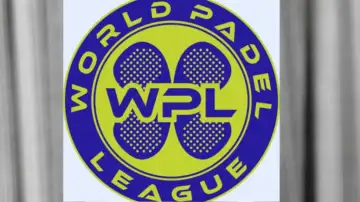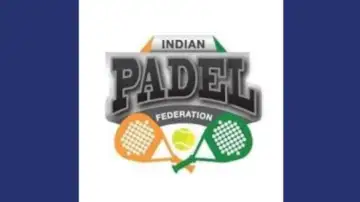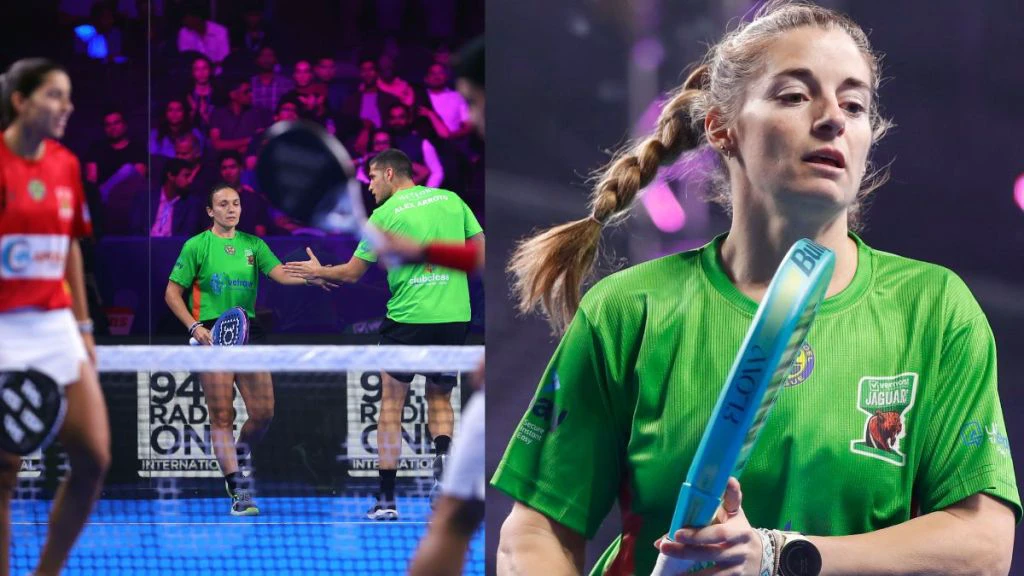Padel, once an unfamiliar name in Indian sporting circles, is now one of the country’s fastest-growing recreational and competitive activities.
The sport’s potential is powerful among India’s large urban middle and upper-middle class. According to the Global Padel Report by Playtomic, although only 5% of the country’s population has the disposable income to engage with premium sports infrastructure, this number still equates to a market of over 60 million potential padel players, which is more than the entire population of countries like Italy or Spain, where padel is booming. Fueled by grassroots enthusiasm, expanding infrastructure, and the rise of international leagues, padel in India quickly evolves from a niche activity into a full-fledged lifestyle movement.
Boost In Visibility And Fan Engagement
Padel’s growth in India has not been driven only by grassroots participation and infrastructure but also by a sharp rise in visibility through international leagues. The World Padel League (WPL), in particular, has played a crucial role in bringing padel to the spotlight in India. After debuting with its first season in Dubai and a successful second season in Mumbai, the league has built strong momentum and fan interest. The upcoming edition of WPL will be held from August 12-16 at the Nesco Centre in Mumbai. It will feature two new franchises, reflecting the sport’s growing popularity and the demand for more teams and talent.
 Speaking on the league’s growth and the sport’s rising appeal in India, Hemali Sharma, Co-Founder, World Padel League, said, “The uptake of padel in India has skyrocketed in the last three years, with a significant growth in both interest (from players, partners, and spectators) and infrastructure. Recognising this growing enthusiasm and a vision to bring the sport into mainstream visibility, we launched the World Padel League in India earlier this year, with support from the Indian Padel Federation. The idea is to create an IP that caters to seasoned fans and first-time audiences alike. In the upcoming season of WPL, we’re expanding the scale with two new teams, new franchise owners, and a fine mix of new and returning players. The response so far has been encouraging – it’s great to see people being excited about padel. The excitement of the fans, new courts coming up across cities, and the player base growing stronger every day reflect that padel has all the makings of a lasting sport and is not a passing phase.”
Speaking on the league’s growth and the sport’s rising appeal in India, Hemali Sharma, Co-Founder, World Padel League, said, “The uptake of padel in India has skyrocketed in the last three years, with a significant growth in both interest (from players, partners, and spectators) and infrastructure. Recognising this growing enthusiasm and a vision to bring the sport into mainstream visibility, we launched the World Padel League in India earlier this year, with support from the Indian Padel Federation. The idea is to create an IP that caters to seasoned fans and first-time audiences alike. In the upcoming season of WPL, we’re expanding the scale with two new teams, new franchise owners, and a fine mix of new and returning players. The response so far has been encouraging – it’s great to see people being excited about padel. The excitement of the fans, new courts coming up across cities, and the player base growing stronger every day reflect that padel has all the makings of a lasting sport and is not a passing phase.”
Building The Ecosystem: The Role Of Indian Padel Federation
While leagues like WPL are amplifying the sport’s reach, the groundwork has been laid by the Indian Padel Federation (IPF) – the sport’s governing body in India. Efforts are also underway to gain formal recognition from the Sports Authority of India (SAI)-a critical milestone that could unlock new funding, facilities, and legitimacy.
According to Ronnie Sehgal, General Secretary, Indian Padel Federation, “Padel is fast becoming one of the most exciting new sporting passions in India, attracting players and fans from all walks of life. As the official governing body, we’re proud to have laid the foundation for this momentum by supporting infrastructure, player development, and national competitions that make the sport more accessible and aspirational than ever before.”
The IPF is also working closely with international bodies to align India’s padel ecosystem with global standards, ensuring players are equipped to compete at the international level.
 More Than A Game: Padel Is Becoming A Lifestyle Movement
More Than A Game: Padel Is Becoming A Lifestyle Movement
Unlike many sports that require years of training to enjoy, padel is relatively easy to pick up, especially with prior racquet sports experience. Played in doubles on an enclosed court, it encourages teamwork, quick reflexes, and strategy. The short match durations and low learning curve make it ideal for urban Indians looking for a quick yet engaging way to stay active and social.
From high-rises to five-star resorts, padel is becoming a marker of premium living. In particular, it has struck a chord with Gen Z in India, who see padel as a social and aspirational experience that combines fitness, community, and coolness.
Padel’s rapid rise in India is also a result of increasing adoption on the ground. The journey began humbly in 2017, with a single court in Bengaluru. Today, there are over 100 courts across India’s major metros. This aligns with Padel’s global trajectory with 50,000 courts across 150+ countries. With 30-35 million players worldwide, including women who now make up approximately 40% of all participants, the sport is no longer niche-it’s becoming a global force.
Easy To Learn, Hard To Ignore: Padel’s Growing Appeal Across Urban India
Padel is easy to learn, and combined with a strong social appeal, it has become a hit among young professionals, families, and fitness enthusiasts. Developers and clubs are taking note, installing courts in premium residential and hospitality spaces to meet rising demand.
Nasir Ali, Founder & CEO, Gallant Sports & Infra Ltd. said, “Padel is fast becoming India’s most exciting new sport – it’s social, inclusive, and thrives in compact urban spaces. With just 3,000 sq. ft. and an investment starting from ₹15-20 lakhs, clubs, schools, and real estate developers can set up professional-grade courts that instantly elevate community engagement and lifestyle value. At Gallant Sports, we’re driving this revolution with turnkey, World Padel League-inspired solutions. Through our ‘Make in India’ initiative, we now manufacture globally certified Padel and Pickleball courts right here in India – making premium sports infrastructure more accessible than ever before.”
 The rising popularity is also reflected in how quickly courts are filling up across cities, and how the sport is capturing the imagination of first-time players, health professionals, and sports insiders alike. Speaking on the growing cultural impact of padel in India, Dr. Pradyumna Tembhekar, Orthopaedic and Sports Medicine Physician, Olympic-certified Sports Nutritionist and Psychologist, said, “Having witnessed the craze around the World Padel League, I truly believe the sport has a bright future. Inspired to pick up a racket myself, I have been trying to book Padel courts-only to find most of them already full. That’s a telling sign of how rapidly the sport is catching on. Having followed sports leagues and worked closely with athletes throughout my career, I can say that the “sportainment” route is paying off. It’s bringing in new audiences, creating buzz, and making emerging sports like Padel more accessible and aspirational. With Season 3 of the World Padel League scheduled over a long weekend in August-and with the sport’s popularity rising with every passing month-I believe we’re looking at a breakout moment. This season needs to be bigger, bolder, and even more spectacular.”
The rising popularity is also reflected in how quickly courts are filling up across cities, and how the sport is capturing the imagination of first-time players, health professionals, and sports insiders alike. Speaking on the growing cultural impact of padel in India, Dr. Pradyumna Tembhekar, Orthopaedic and Sports Medicine Physician, Olympic-certified Sports Nutritionist and Psychologist, said, “Having witnessed the craze around the World Padel League, I truly believe the sport has a bright future. Inspired to pick up a racket myself, I have been trying to book Padel courts-only to find most of them already full. That’s a telling sign of how rapidly the sport is catching on. Having followed sports leagues and worked closely with athletes throughout my career, I can say that the “sportainment” route is paying off. It’s bringing in new audiences, creating buzz, and making emerging sports like Padel more accessible and aspirational. With Season 3 of the World Padel League scheduled over a long weekend in August-and with the sport’s popularity rising with every passing month-I believe we’re looking at a breakout moment. This season needs to be bigger, bolder, and even more spectacular.”
What’s Next For Padel
India’s padel future looks promising as the building blocks fall into place. If early signs are any indication, padel may soon move from the periphery of Indian sports to the centre of the country’s lifestyle and sporting spirit. As global trends and local ambition converge, padel has arrived and it’s here to stay.
